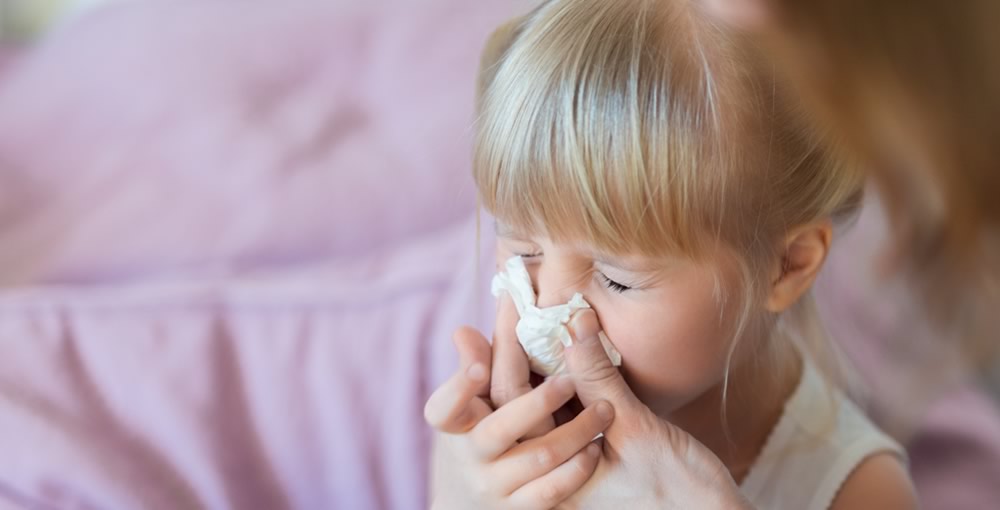5 childhood illnesses every parent or caregiver need to know about
September 25, 2018

Meet the teacher night, open houses, and first football games are in the books for the 2018/2019 school year. And, just when you think you can take a breather from the back-to-school hustle, your child comes home with a belly ache, stuffy nose, headache or rash.
“Certain illnesses seem to thrive during the last few weeks in September and into early October, and it’s due to the confines of school,” said Dr. David Gude, COO and Chief Medical Officer for Texas MedClinic. “When you have a few hundred humans in close proximity all day long sharing the same lunch table, desks and supplies, germs will begin to travel.”
Gude advises parents to encourage their children to wash their hands frequently at schoolor use alcohol-based hand sanitizer. “Hand washing is like a “do-it-yourself” vaccine. Depending on the illness, handwashing can reduce the spread of disease from 15-45 percent.”
So, what are these back-to-school bugs, and when should you see a doctor?
1. Strep Throat
Caused by the Streptococcus Pyogenes bacteria, strep throat is highly contagious. It’s transmitted from person-to-person through airborne droplets when someone coughs or sneezes or through shared food and drinks. Any wonder it’s one of the most common illnesses seen in the first weeks of school?
Strep throat comes on quickly, causing throat pain, red or swollen tonsils, headache, rash, body aches and fever.
If you have symptoms, seek medical attention. Strep throat isn’t dangerous, but it can lead to secondary infections and inflammatory illnesses like Scarlett Fever, Rheumatic fever, or Inflammation of the kidney. Doctors traditionally swab the throat to confirm diagnosis and provide appropriate antibiotic treatment.
Symptoms subside within 24-48 hours of treatment, and children can return to school when their fever subsides.
2. Gastroenteritis
That’s a fancy word for stomach bug. Like strep throat, stomach bugs can be highly contagious and have been known to significantly reduce attendance until the bug subsides.
The most common stomach bugs are caused by the Norovirus and Rotavirus. With these viruses, the stomach and intestines become irritated and inflamed, resulting in watery diarrhea, vomiting, stomach pain, cramping, nausea, headache and fever.
Stomach bugs also can be caused frombacteria such as E. coli and salmonella, which is usually spread by undercooked poultry, eggs, or poultry juices. Salmonella can also be spread through pet reptiles or live poultry.
With any stomach bug, hydration is the most important factor. Chew on ice chips, sip on water throughout the day, adding in electrolytes through over-the-counter drinks like Pedialyte or Gatorade. If you suspect dehydration, seek medical attention immediately.
Stomach bugs can last 2-3 days. Do not return to work or school until the symptoms are gone.
3. Upper respiratory illness/congestion
Stuffy nose, congestion, headache. These are all symptoms of an upper respiratory illness, otherwise known as a cold. Colds are viruses, and are contagious through airborne droplets, just like strep throat and the stomach bug.
Antibiotics do not reduce the severity or length of a cold and are discouraged. Taking unnecessary antibiotics can weaken the immune system, reducing the child’s ability to naturally deter illness and germs. Taking unnecessary antibiotics also leads to antibiotic resistance. Basically, the bacteria overcome the effect of the antibiotics. Texas MedClinic is a strong advocate for proper use of antibiotics. To learn more, go to https://www.texasmedclinic.com/why-didnt-my-doctor-give-me-an-antibiotic/
Understanding the differences between cold and allergies is hard. To learn the differences, click https://www.texasmedclinic.com/four-allergy-seasons-in-south-and-central-texas/
4. Pink Eye
Another highly-contagious bacterial/viral infection, pink eye or conjunctivitis, causes itchy, watery eyes that can create a discharge or crust around the eye. The redness or pink color is caused when the small membrane that covers the eyeball (conjunctiva) becomes inflamed.
Pink eye does not impact your vision. Seek medical attention as soon as symptoms arise. Pink eye can be contagious for as long as two weeks from the onset of symptoms. Early diagnosis and treatment can prevent people around you from getting pink eye, too.
5. Head Lice
Head liceinfestation is most common among elementary school-aged children and requires treatment not only of the child but all those in the household, as well as those who have been in close proximity of the child.
Lice need a host to survive and can only live 1-2 days without a host. As many would believe, head lice are not shared with the family pet. Lice need a human host. Lice are spread through the sharing of hairbrushes, bed pillows, hats, jackets, towels; anything worn by the infested person.
Over-the-counter treatments kill live lice, kill the nits or lice eggs, or both. Read the options carefully.
The CDC recommends not putting conditioner on the hair prior to treatment, and to not wash the hair until 2 days after treatment to allow the insecticide to perform.
After treating with the insecticide, the head must be inspected for lice and nits. Nits need to be removed with a comb. The CDC recommends checking the infected person every 2-3 days to assure all nits and lice have been removed.
Hats, scarves, pillow cases, bedding, clothing, and towels worn or used by the infested person in the 2-day period just before treatment is started should be machine washed and dried using the hot water and hot air cycles because lice and eggs are killed by exposure for 5 minutes to temperatures greater than 53.5°C (128.3°F). Items that cannot be laundered may be dry-cleaned or sealed in a plastic bag for two weeks. Vacuuming furniture and floors can remove an infested person’s hairs that might have viable nits attached.
Seek medical treatment if the over-the-counter treatment does not perform. There are several prescription insecticides that can help.
Treat and remove lice from infected child before returning to school in order to prevent a mass infestation within the classroom or school.
Sources:
https://www.mayoclinic.org/diseases-conditions/pink-eye/symptoms-causes/syc-20376355
https://www.cdc.gov/parasites/lice/head/treatment.html
https://www.cdc.gov/handwashing/why-handwashing.html




